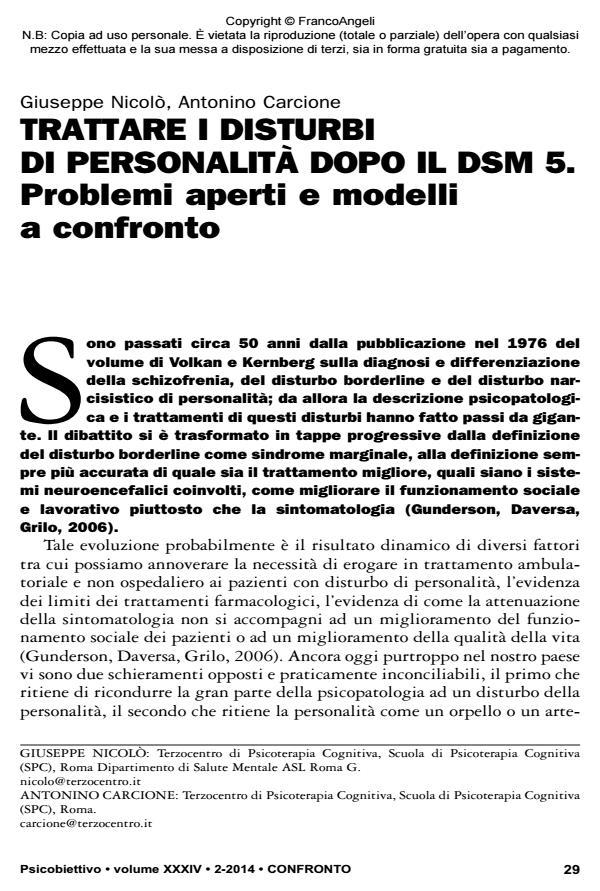Trattare i disturbi di personalità dopo il dsm 5. Problemi aperti e modelli a confronto
Titolo Rivista PSICOBIETTIVO
Autori/Curatori Giuseppe Nicolò, Antonino Carcione
Anno di pubblicazione 2014 Fascicolo 2014/2
Lingua Italiano Numero pagine 17 P. 29-45 Dimensione file 556 KB
DOI 10.3280/PSOB2014-002003
Il DOI è il codice a barre della proprietà intellettuale: per saperne di più
clicca qui
Qui sotto puoi vedere in anteprima la prima pagina di questo articolo.
Se questo articolo ti interessa, lo puoi acquistare (e scaricare in formato pdf) seguendo le facili indicazioni per acquistare il download credit. Acquista Download Credits per scaricare questo Articolo in formato PDF

FrancoAngeli è membro della Publishers International Linking Association, Inc (PILA)associazione indipendente e non profit per facilitare (attraverso i servizi tecnologici implementati da CrossRef.org) l’accesso degli studiosi ai contenuti digitali nelle pubblicazioni professionali e scientifiche
I pazienti affetti da disturbi di personalità pur costituendo una delle sfide maggiori per i servizi di salute mentale (costituiscono circa il 15% della popolazione clinica in trattamento) è raro che ricevano un trattamento integrato e completo come prevede la letteratura scientifica e spesso sono indirizzati a cure farmacologiche per attenuare la sintomatologia. In questo lavoro sarà approfondito il dibattito che ha portato alla pubblicazione del DSM 5 e in particolare sarà analizzato e descritto il modello di trattamento del Terzocentro di Psicoterapia Cognitiva di Roma che ha promosso la ricerca sulla metacognizione e sui pazienti gravi.
Parole chiave:Disturbi di personalità; DSM 5; metacognizione; terapia metacognitiva interpersonale; trattamento integrato.
Giuseppe Nicolò, Antonino Carcione, Trattare i disturbi di personalità dopo il dsm 5. Problemi aperti e modelli a confronto in "PSICOBIETTIVO" 2/2014, pp 29-45, DOI: 10.3280/PSOB2014-002003